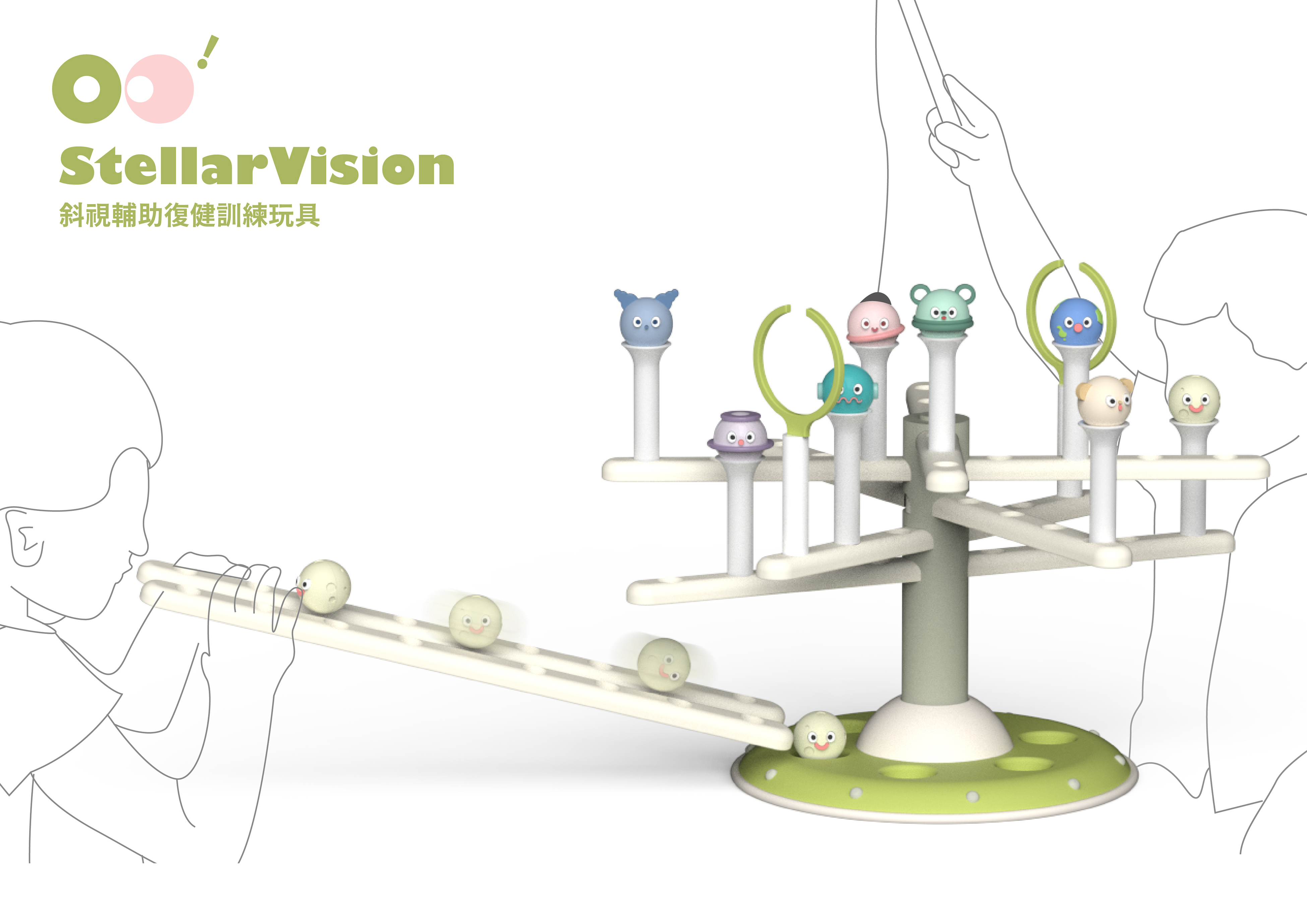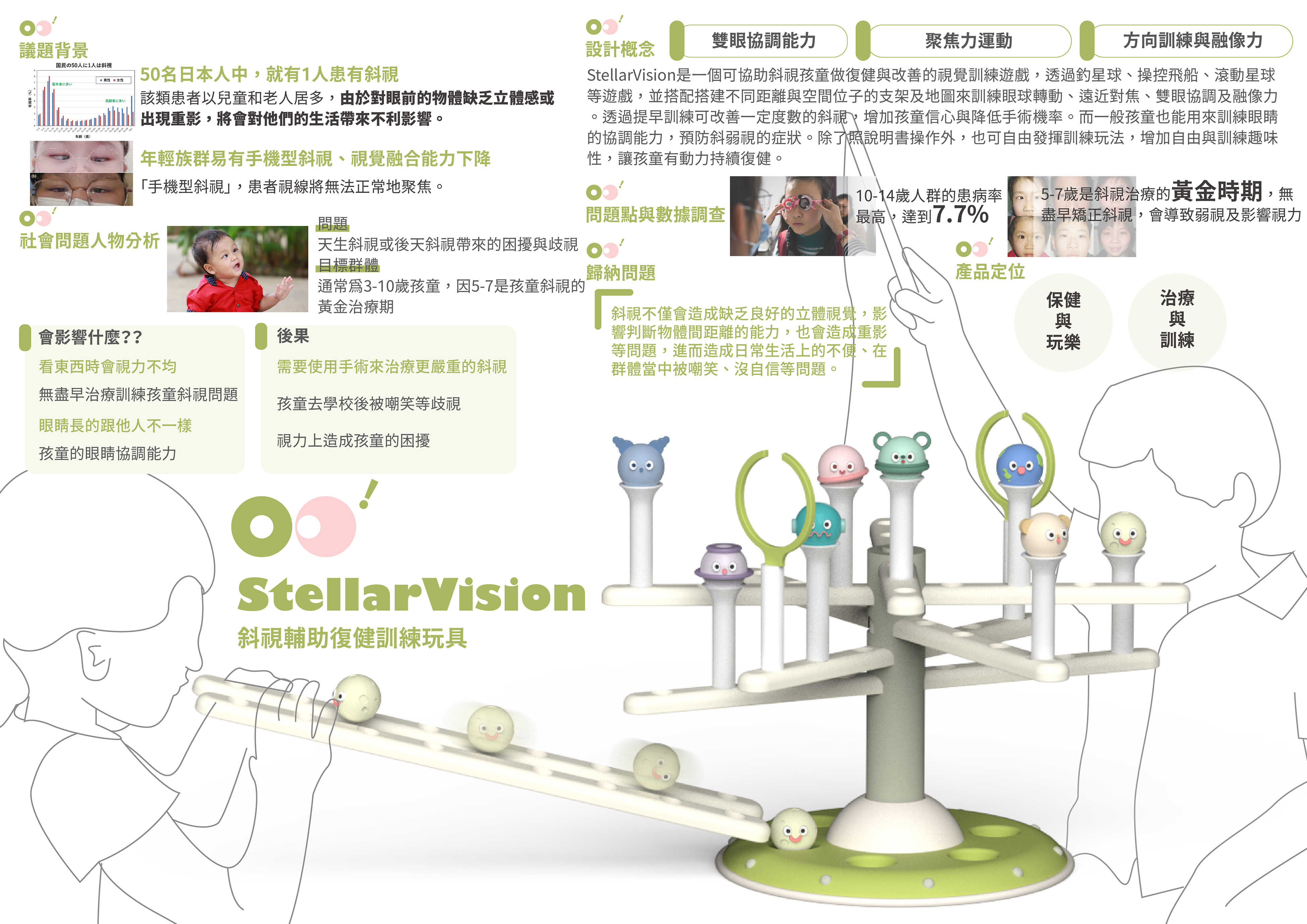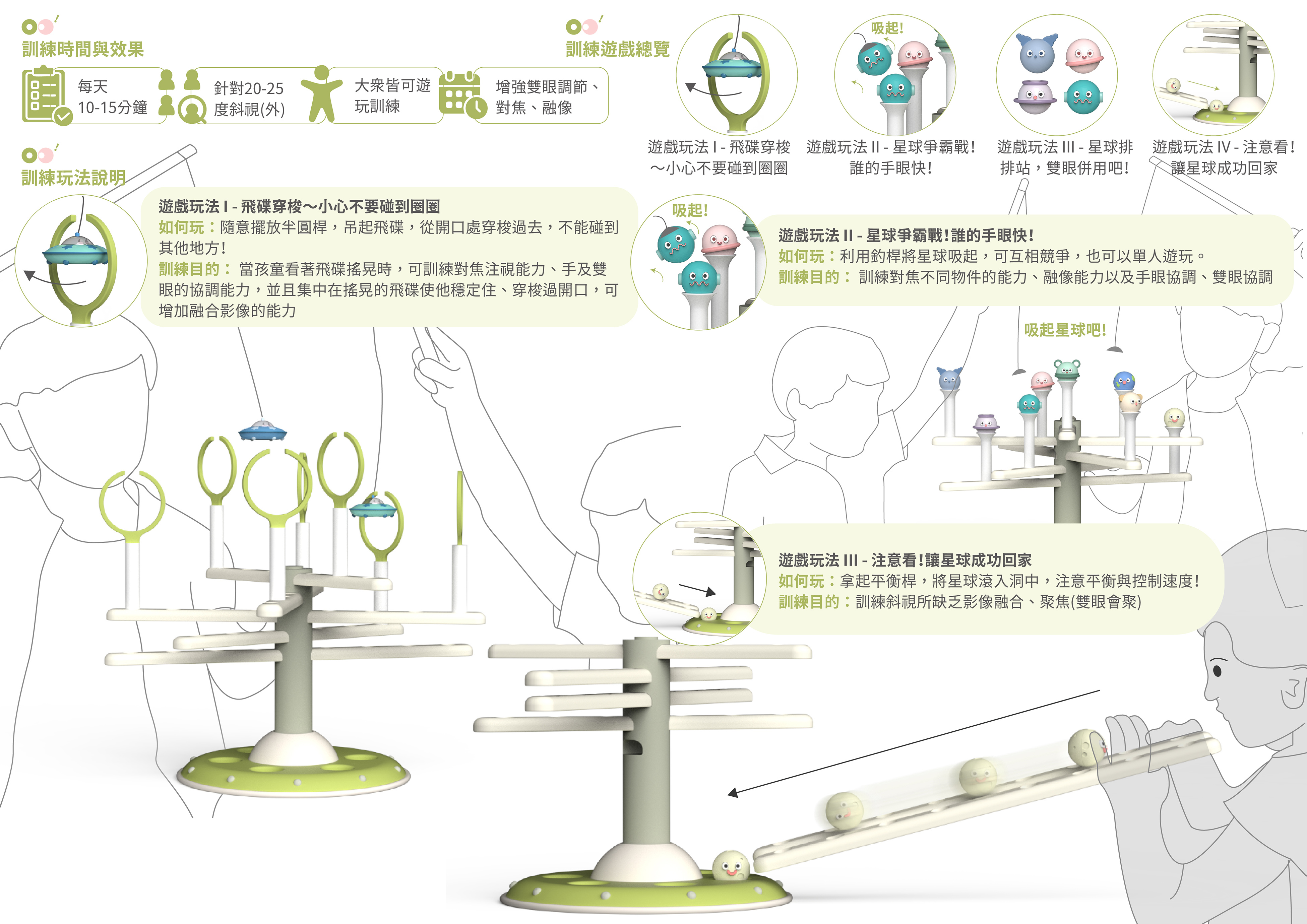




問題點
1.根據日本京都大學的研究發現,每50名日本人中就有1人患有斜視。可見斜視患者比例很高。
2.從小若無盡早治療孩童的斜視問題、又或者是訓練孩童的眼睛協調能力,易造成長大後更需要使用手術來治療更嚴重的斜弱視,或造成孩童因眼睛歪斜。
3.斜視還會造成孩童去學校後被嘲笑等歧視的情況發生,並也會在視力上造成孩童的困擾。
設計概念
StellarVision是一個可協助斜視孩童做復健與改善的視覺訓練遊戲,透過釣星球、操控飛船、滾動星球等遊戲,並搭配搭建不同距離與空間位子的支架及地圖來訓練眼球轉動、遠近對焦、雙眼協調及融像力。透過提早訓練可改善一定度數的斜視,增加孩童信心與降低手術機率。而一般孩童也能用來訓練眼睛的協調能力,預防斜弱視的症狀。除了照說明書操作外,也可自由發揮訓練玩法,增加自由與訓練趣味性,讓孩童有動力持續復健。
SDGs 價值
SDGs 3: 良好健康與福祉
透過StellarVision訓練矯正斜視,改善孩童的視力健康,直接促進良好的健康與福祉。減少視力問題引發的其他健康問題,提高整體生活質量。
SDGs 4: 優質教育
遊戲化設計不僅進行視力矯正,還能通過遊戲提高孩童的注意力和手眼協調能力,促進學習發展。且視力健康的提升有助於孩童在學習過程中的表現,提高學習效果。
SDGs 10: 減少不平等
通過提高斜視孩童的自信心和社交能力,以及減少斜弱視的問題發生、盡早治療訓練。幫助孩童更好地融入社會,減少因健康問題導致的社會不平等。
Problem
1. According to a study by Kyoto University in Japan, one in every 50 Japanese people suffers from strabismus. It can be seen that the proportion of patients with strabismus is very high.
2. If a child’s strabismus problem is not treated early, or if the child’s eye coordination ability is not trained, it may lead to the need for surgery to treat more serious strabismus and amblyopia when he grows up, or the child may have crooked eyes.
3. Strabismus can also cause children to be ridiculed and discriminated against when they go to school, and can also cause vision problems for children.
Design Concept
StellarVision is a visual training game that can help children with strabismus to rehabilitate and improve their vision. Through games such as fishing for planets, controlling spaceships, and rolling planets, as well as building brackets and maps at different distances and spatial positions, it trains eye movement, near and far focusing, binocular coordination, and image integration. Through early training, a certain degree of strabismus can be improved, which can increase children’s confidence and reduce the risk of surgery. Children can also use it to train their eye coordination and prevent symptoms of strabismus and amblyopia. In addition to following the instructions, you can also freely play the training method to increase freedom and fun of training, so that children will be motivated to continue rehabilitation.
SDGs Value
SDGs 3: Good health and well-being
Correcting strabismus through StellarVision training improves children’s visual health, directly contributing to good health and well-being. Reduce other health problems caused by vision problems and improve overall quality of life.
SDG 4: Quality Education
Gamification design not only corrects vision, but also improves children's attention and hand-eye coordination through games, thereby promoting learning development. In addition, improving vision health can help children perform better in the learning process and improve learning outcomes.
SDG 10: Reduced Inequality
By improving the self-confidence and social skills of children with strabismus, reducing the occurrence of strabismus and amblyopia problems, and providing treatment and training as early as possible. Help children better integrate into society and reduce social inequality caused by health problems.